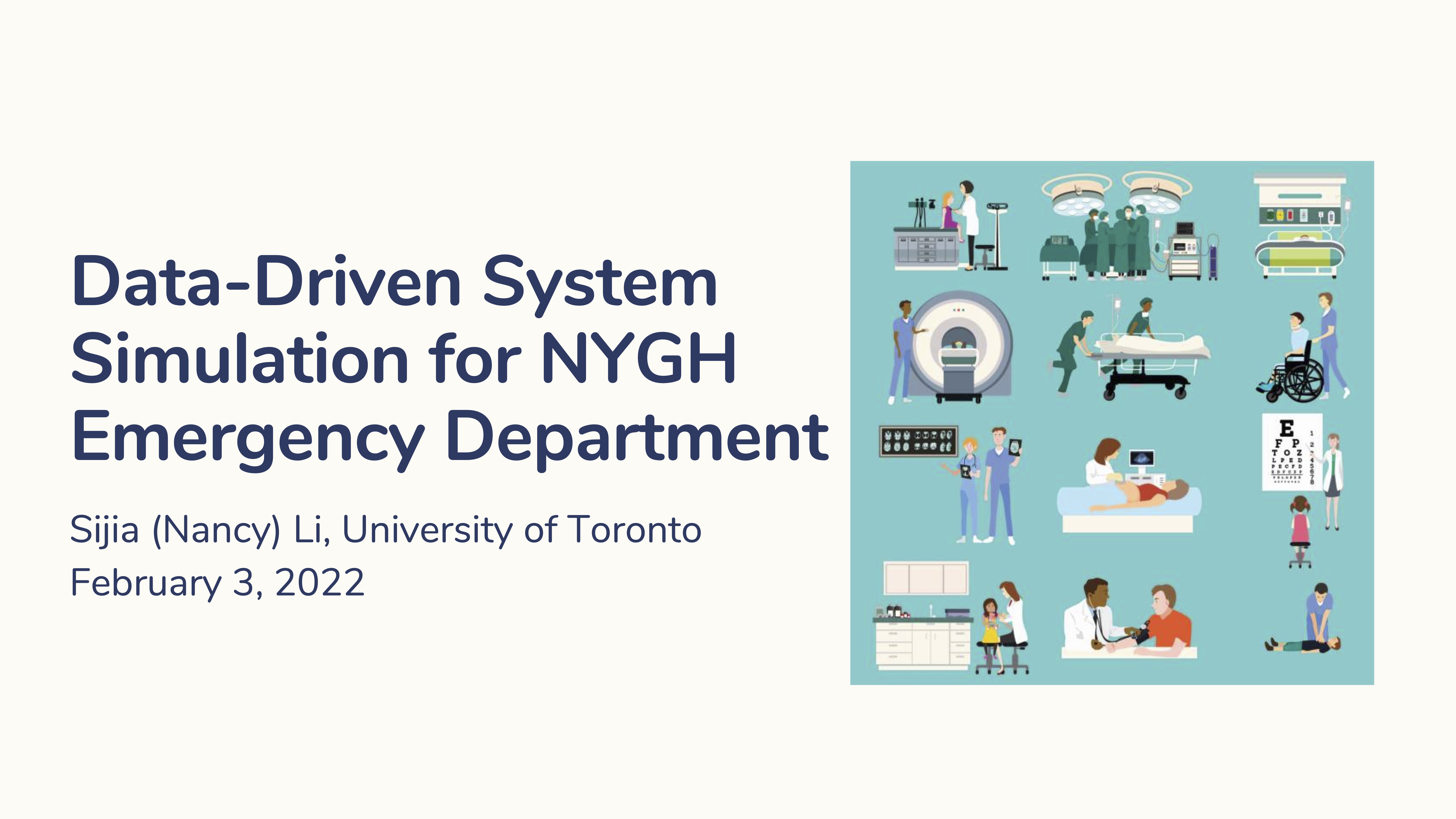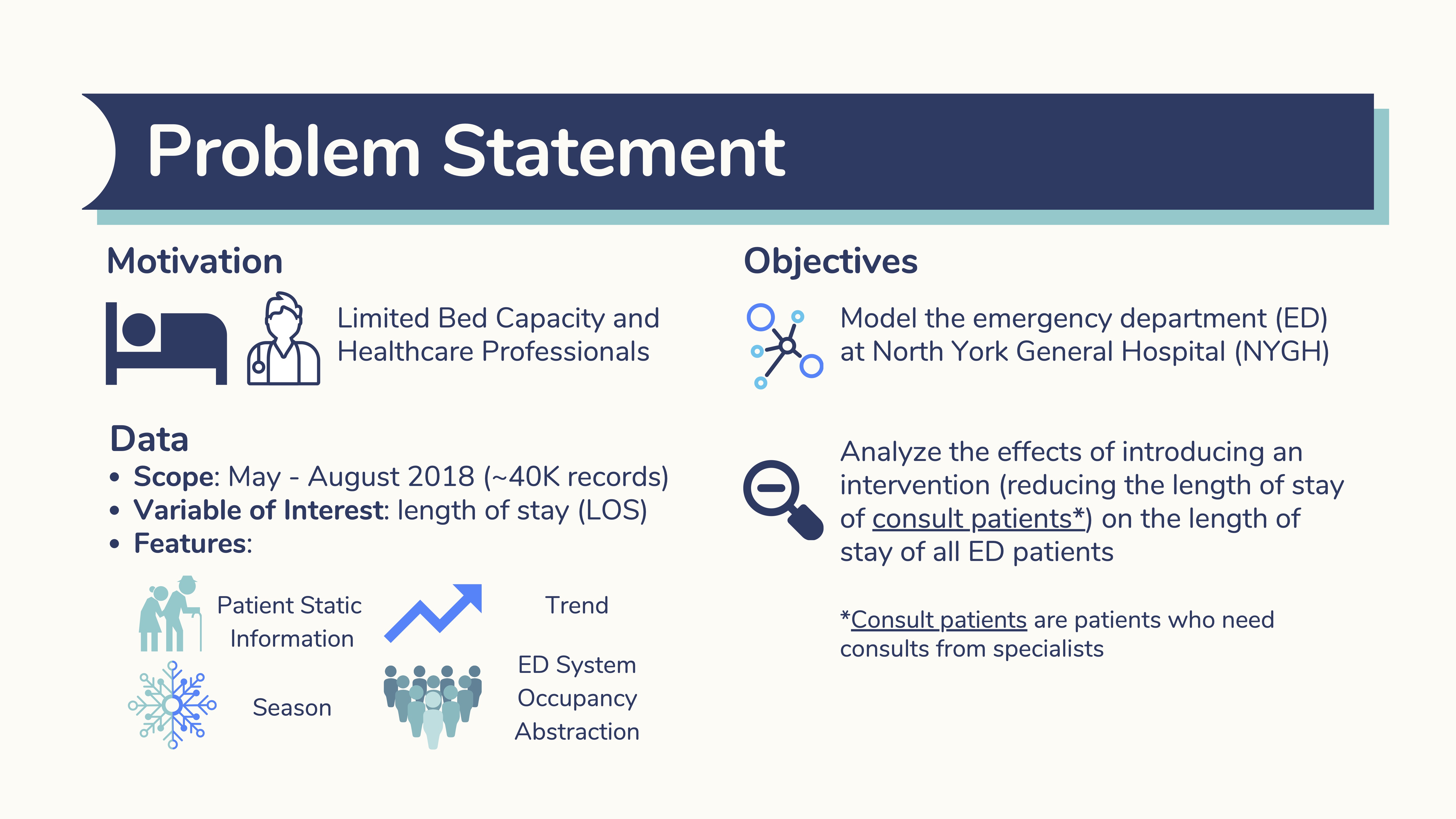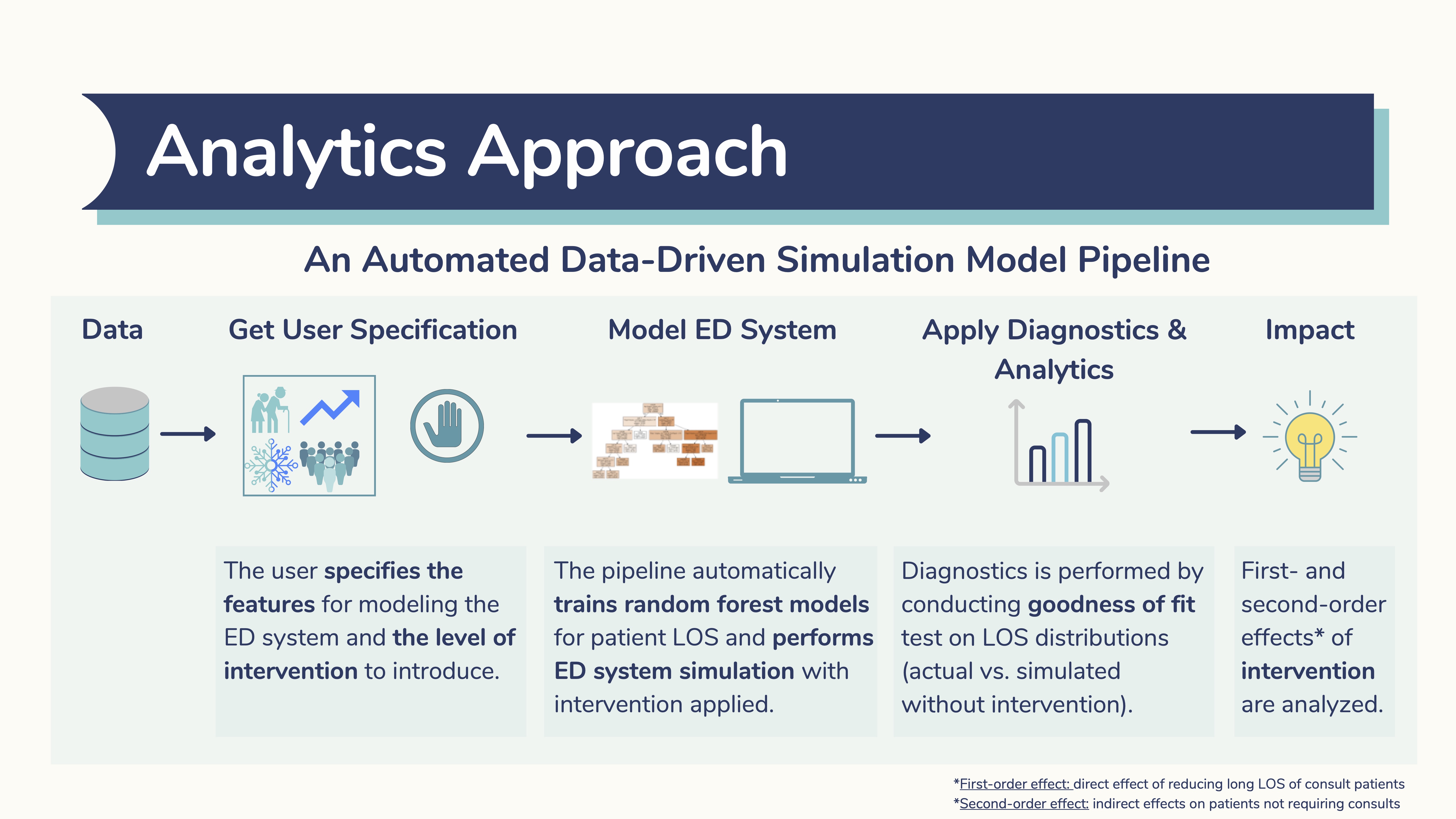Data-Driven System Simulation for NYGH Emergency Department
Highlight
- Category: Research
- Year: 2020-2021
- Keywords: Healthcare, Operations Management, Random Forest, Simulation, Python
Description
A queueing system can be described as a system where customers arrive for service and a queue develops
when there are more customers in the system than the number of servers. All queueing systems will have
an arrival process, a service and departure process, and a number of servers. Simulation, although not
exact, can be used to study queueing system behaviours and serve as the “digital twin” of complex
real-life systems. This is a project in the area of healthcare that focuses on data-driven system
simulation in hospital emergency departments (ED). Our interest is to study the effect of congestion
in the ED system, as hospital EDs can encounter challenges such as limited resource capacity and long
patient sojourn time. We developed an automated pipeline consisting of three main steps:
1. Get user specification: ED system context, congestion representation by system state,
interventions
2. Construct ED model: a) automatically learn patient length of stay (LOS) model from
data, and b) apply interventions during simulation
3. Apply diagnostics and analytics: a) evaluate goodness of fit of LOS model, and
b) study the impact of introducing interventions to the system
The data used for this project is from North York General Hospital (NYGH) ED.




